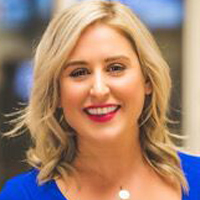
Stations Get Creative To Monetize OTT Offerings

 NEW YORK — When KSL-TV Salt Lake City wanted to grab the attention of viewers and advertisers to its streamed service, it turned to the ski slopes and Andy Phillips, a former University of Utah All-American kicker and U.S. Ski Team member.
NEW YORK — When KSL-TV Salt Lake City wanted to grab the attention of viewers and advertisers to its streamed service, it turned to the ski slopes and Andy Phillips, a former University of Utah All-American kicker and U.S. Ski Team member.
At the start of this year, Phillips starred in a streamed series that helped parents teach their kids to ski. For advertisers, “this wasn’t about a CPM-based buy. This was about coming up with content that people can use on their television, their mobile, wherever they’re at,” said Alan Blackburn, sales manager at KSL. “We used our own resources; we didn’t hire anybody.”
Both Chevy and the Ski Utah association picked up the costs. Chevy dealerships featured the series on screens in their facility areas where customers were waiting for service. “We made a lot of money on it,” said Blackburn. “Our model, for how we’re making money on OTT [over the top], is all about content that our clients can share.”
Blackburn’s success story was one of the highlights of a panel session called “Monetizing OTT” which took place during TVNewsCheck’s annual OTT News Summit on Tuesday. While everyone on the panel was keenly focused on advertising and sponsorships as a way to make streamed services pay off, the experiences also veered into the realm of subscription video on demand (SVOD).

Nexstar’s Anthony Katsur
Anthony Katsur, Nexstar Media Group’s SVP of digital strategy, corporate development and operations, gave some details about the SVOD service at KRON San Francisco.
“We soft launched it late last year. It was kicking the tires,” he said. The OTT channel is focused on providing users with content that goes more deeply beyond what could be found on KRON’s broadcast station, including live coverage. “We had to reinvent our news operation to create this always-on, live, local OTT channel.”
Katsur wouldn’t say how many subscribers have signed up for the $2.99-a-month service. But it’s been successful enough for Nexstar to begin contemplating which of its other stations will launch an SVOD service, he said. Possible startups in three or four markets are now being considered, with the ultimate goal of every Nexstar station having some form of free or subscription OTT product.
No other broadcaster on the panel — which included representatives of E.W. Scripps and Gray TV in addition to KSL (Bonneville) and Nexstar — said they were considering the launch of SVOD services. And the consensus among them was that CPM rates for advertising-supported streamed services range between $10 and $50, with $40 seeming to be about average.
As with KSL’s ski-training content, sponsorships were seen as a great way to attract advertisers by Tamara Franklin, IBM’s VP of media and entertainment, industry solutions. “Does that make more sense? If you know the relevance of your content and you work closely with the brand?” she asked the broadcasters.
Franklin suggested that sponsorships would allow them to run fewer ads and charge more. “You’ll have a better consumer experience and potentially make more money.”

Scripps’ Dave Francois
But there are limits to the sponsorship proposition. “I’m going to be the guy that says the ‘J’ word on the sales panel,” said Dave Francois, Scripps’ managing director of OTT and product strategy in the local media division. “Some of us have journalism operations. Getting into that kind of gray-area sponsored mix just isn’t an option [for news content].”
Nexstar’s Katsur said that the technology for serving ads is “sound,” but the programmatically delivered ad experience can be challenging. He noted that a Farmer’s Insurance ad might run repeatedly during ad breaks on Hulu. “It’s the programmatic mentality of, ‘I have to spend out my budget. I have to fill, fill, fill,” he said. “It’s the approach of bringing programmatic thinking into linear.”

Gray’s Erin Overstreet
“I agree that the ad tech might be there, but the consumer experience isn’t necessarily there. And then the way the sellers, in turn, know how to sell it,” said Erin Overstreet, Gray Television’s director of digital ad sales. She referenced the number of media options sales people are promoting to advertisers, and regulations they need to be cognizant of.
“That affects how it’s being sold, and that affects the consumer experience.” So it’s a matter of educating people in the field, Overstreet added.
Scripps’ Francois said the local stations’ OTT efforts have benefitted from the experiences of Newsy, a streamed service that serves up news with younger viewers in mind, which Scripps acquired in 2014. “We share pretty liberally,” Francois said, referring to Blake Sabatinelli, Newsy’s CEO, who spoke on an earlier panel. “When we first put out our OTT products back in 2016 for local, we very much based our model on theirs.”
Gaining scale is key. So the biggest takeaway from Newsy took place when the Scripps stations’ OTT services were contemplating customer acquisition — getting more people to use the services. “We have, as local TV stations, upwards of 90% brand awareness, even for third-place stations,” Francois said.
“When you have an ad on a Roku home screen that has our brand, and let’s say you’ve got a hurricane coming or an election coming, if you’ve got that creative ready [on Roku] with that high brand awareness and the high mind share of that event, you can effectively get your cost-per-acquisition rate down in the 25 cent range, the 10 or 15 cent range. Which is insane. And the model becomes profitable,” Francois added.
You can find TVNewsCheck’s exclusive coverage of the summit here and listen to audio files of all the sessions here.
































Comments (0)